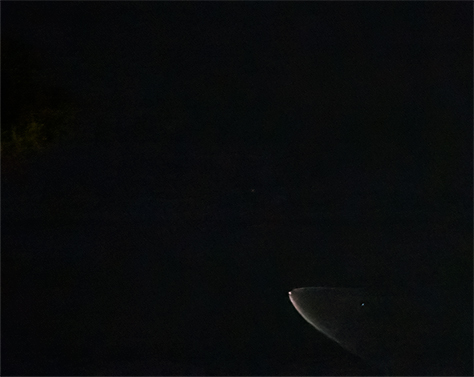there was a late night falcon 9 launch on 6/22
it being a weekday in the midst of a loooong run of of
clouds, i chose to give at quick try from my front yard rather than an
optimal viewing site. so with the spaceX stream
running on my phone i went out and looked northwest towards
vandenberg. i'd seen the orange glow of a night falcon launch in the
past, so i thought i might catch it.
12:19AM "Lift off"...nothing
T+1:16 "Max Q"...nothing
T+2:35-2:38 Main Engine Cut Off, "stage separation"...nothing
I begin packing up just as a cone of light grazed the owl tree:
 |
| Falcon 9 |
i was able to catch a few closer shots as it faded. difficult catching a moving target in the dark:
Image details:
in viewing the spacex stream, it looks like they were clouded out locally which might be why i couldn't see the rocket on initial lift off.
Eastbluff, CA
6/23/23 ~12:25 AM
wide view
Samsung galaxy 22S ultra
f1.8 1/4 s 23mm ISO 4000
10/27/22 Newport Beach, CA
nikon D850
F-S DX NIKKOR 55-300mm f/4.5-5.6G ED VR
f/4.5 @55 mm 1/80 sec ISO 102,400!
used absurdly high iso to capture the faint moving object
this resulted in very noisy images which had to be denoised after dark subtraction























